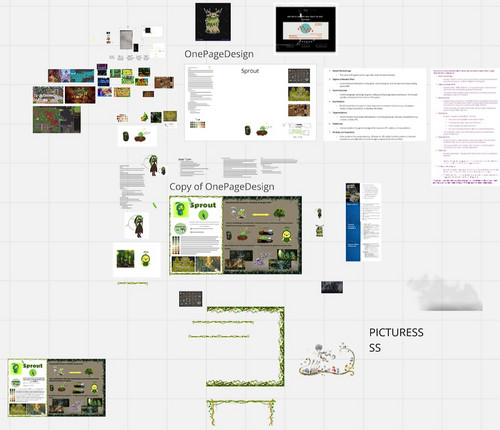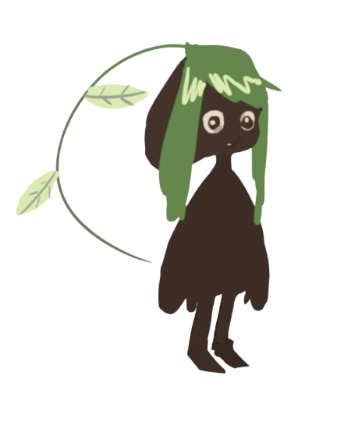Devlog #2 (Bringing the Forest back to life)

Welcome back to the development journey of Sprout! In our last devlog, we discussed the core concept, gameplay mechanics, and vision for the game. This time, we're focusing on one of the most critical stages in game development: the pitch. A successful pitch is key to attracting attention from players, investors, or potential collaborators. So today, we’re giving you an inside look at how we’re crafting our game pitch for Sprout.
Pitching Sprout: What Makes It Special?
What is Sprout? Sprout is a 2D-pixel art action-adventure RPG that blends exploration, puzzle-solving, and environmental themes. Players take on the role of a young Tree Guardian, tasked with restoring a magical forest devastated by climate change. Armed with the ability to grow and manipulate magical seeds, players will awaken ancient spirits and rebuild the balance of nature, while confronting dark forces along the way.
Key Pitch Points
1. A Heartfelt Story with a Purpose
At its core, Sprout isn’t just a game—it’s a narrative about the fight to restore nature against the destructive forces of climate change. Our story is designed to resonate with players emotionally, while also challenging them to reflect on real-world environmental issues. The blend of magical realism and eco-consciousness gives Sprout a unique storytelling angle that we’re confident will connect with players who care about these themes.
2. Unique Seed-Based Abilities
The magic of Sprout comes from its innovative seed mechanic. Players can carry five types of magical seeds, each with distinct abilities that unlock new ways to explore and solve puzzles. The ability to combine seeds and use them in unexpected ways is a core part of the game's appeal.
3. A World that Grows with You
In Sprout, the world itself transforms as players progress. As you heal different areas of the forest, you’ll witness the environment gradually coming back to life. Each restored section opens new paths, reveals hidden secrets, and allows for more interaction with the spirits of the forest. This sense of growth and renewal is woven directly into both the narrative and gameplay.
4. Puzzle-Solving Meets Exploration
The game’s structure combines freeform exploration with satisfying puzzles that require players to think about how to use their seed abilities in innovative ways. Players will unlock new areas by solving environmental puzzles, freeing tree spirits, and confronting ecological threats in a vibrant, detailed forest world.
5. Art Style & Atmosphere
The 2D-pixel art aesthetic of Sprout is inspired by games like Stardew Valley and Celeste but with its own lush, magical twist. The vibrant, enchanting forest provides the perfect backdrop for a game that’s as much about beauty as it is about solving puzzles and tackling adventure. This choice of style helps keep development manageable while still allowing for a high level of detail and charm that players will love.
The Importance of Pitching a Game
1. Clarifying the Vision Before you can sell your game to others, you need a clear and concise vision of what your game is about. Pitching forces you to refine the essence of your game into a compelling narrative. It pushes you to answer key questions: What is the game’s core concept? Why is it unique? Who is the audience?
2. Attracting Early Interest Whether you’re aiming to engage potential players, seek investment, or find collaborators, a solid pitch acts as your first impression. It's what grabs attention and gets people talking about your game. In the case of Sprout, our pitch focuses on the unique seed-based mechanics and the eco-conscious story, which makes it stand out from the crowd.
3. Staying Focused Pitching helps you focus on the core elements of your game, keeping you on track during development. The clear goals and features outlined in a pitch act as a roadmap, ensuring you don’t stray too far from your original vision. For Sprout, we’ve outlined the key mechanics, narrative, and aesthetic—guiding our development to maintain a cohesive experience.
4. Building a Community When done effectively, a pitch not only sells a game—it also invites people into its world. It creates a foundation for building a community of players who are invested in the game’s journey from development to release. Sharing the pitch early allows developers to get feedback, make adjustments, and keep future players excited through devlogs like this and updates.
Thanks to all who got this far and thanks for all your continued support! We are looking forward to sharing our development journey with all of you!
Stay grounded,
Team Green Beans 🌱
Sprout
| Status | In development |
| Authors | Tmax007, Drarist76, WH0409, akiraking, tamel |
| Genre | Puzzle |
| Tags | 2D, environment, Exploration, Singleplayer, Top Down Adventure |
More posts
- Beta Highlights (Aditya)Mar 24, 2025
- DeeganKosen_Devlog _W7-10Mar 21, 2025
- Dev Log_White Huang_W7-10Mar 20, 2025
- Alpha Highlights (Aditya)Feb 18, 2025
- DeeganKosen_Devlog _W4-6Feb 16, 2025
- Dev Log_White Huang_W4-6Feb 12, 2025
- DeeganKosen_Devlog _W1-3Jan 25, 2025
- Pre-Production Highlights (Aditya)Jan 24, 2025
- Dev Log_White Huang_W1-3Jan 23, 2025
- Devlog #5 (Potential Expansion)Dec 08, 2024

Leave a comment
Log in with itch.io to leave a comment.